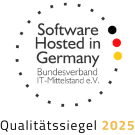The concept of working remotely has undergone a seismic shift in recent years. Once a fringe perk offered to a select few, it’s now a defining feature of the modern workforce. A 2023 study by Owl Labs found that a staggering 70% of global workers desired a hybrid or fully remote work model. This mass migration to remote work environments, however, has introduced a new set of challenges for businesses: securing a geographically dispersed workforce.
Traditionally, cybersecurity measures focused on fortifying a central office network. Firewalls, intrusion detection systems, and access controls were meticulously configured to protect a well-defined perimeter. However, the remote work revolution has shattered this perimeter, leaving businesses scrambling to adapt their security strategies. Let’s delve deeper into the unique challenges of securing a remote workforce and explore practical solutions to mitigate the risks.
The Expanding Attack Surface: Vulnerabilities of Remote Work
The convenience of “Work From Anywhere” comes at a cost. With employees logging in from personal devices, coffee shops, and home networks, the attack surface for cybercriminals has significantly expanded.
Here are some of the key vulnerabilities associated with remote work:
Unsecured Personal Devices: Many businesses allow employees to use their personal laptops and desktops for work purposes. These devices may not have the same level of security protocols as company-issued equipment, increasing the risk of malware infections and data breaches.
Public Wi-Fi Networks: Remote workers often connect to public Wi-Fi networks at cafes, airports, and co-working spaces. These networks are inherently insecure, making it easy for hackers to intercept sensitive data transmissions.
Shadow IT: Employees may use unauthorized cloud applications and online tools to perform their tasks. These “shadow IT” solutions can bypass corporate security measures, creating blind spots for IT teams.
Phishing Attacks: Phishing emails remain a top threat, and remote workers may be more susceptible due to a lack of face-to-face interaction with IT support.
Beyond the Firewall: Building a Secure Remote Work Ecosystem
Securing a remote workforce requires a multi-layered approach that goes beyond traditional perimeter defenses. Here are some key strategies to consider:
Zero Trust Architecture: This approach assumes no user or device is inherently trustworthy. Every access request, regardless of location, requires rigorous verification before granting access to sensitive data or applications.
Endpoint Security: Deploy robust endpoint security solutions on all devices used for work, including desktops, laptops, and smartphones. These solutions should include anti-malware, anti-virus, and application control features.
Multi-Factor Authentication (MFA): MFA adds an extra layer of security to login processes by requiring a second factor, such as a code from a mobile app, in addition to a password.
Cloud Security: If your business utilizes cloud-based applications and storage, ensure they offer robust security features like encryption and access controls.
Security Awareness Training: Regularly educate employees on cybersecurity best practices, including phishing email identification, strong password hygiene, and the importance of reporting suspicious activity.
Data Loss Prevention (DLP): DLP solutions can help prevent sensitive data from being accidentally or intentionally shared outside the organization.
Building a Culture of Security
Technical solutions are essential, but fostering a culture of security is equally important. Employees should feel empowered to report suspicious activity and seek guidance from the IT department when unsure about cybersecurity protocols.
Continuous Monitoring and Improvement
The threat landscape is constantly evolving. Regular security audits and penetration testing can help identify vulnerabilities before they are exploited. Additionally, staying updated on the latest cybersecurity threats and trends is crucial for maintaining a robust defense posture.
Embracing the Future of Work Securely
The “Work From Anywhere” model is here to stay. By implementing the security strategies outlined above, businesses can empower their remote workforce while mitigating cyber risks. Remember, security is not a one-time fix; it’s an ongoing process that requires continuous vigilance and adaptation. By prioritizing a secure remote work environment, businesses can unlock the full potential of a geographically dispersed workforce and thrive in the dynamic work landscape of the future.
The Human Element: Addressing Social Engineering Threats
Phishing attacks remain a significant threat, even for security-conscious employees. Social engineering tactics exploit human psychology to trick individuals into revealing sensitive information or clicking on malicious links. Here are some additional tips to mitigate social engineering threats:
Phishing Simulations: Regularly conducting simulated phishing attacks helps test employee awareness and identify areas for improvement in training.
Restricted Download Permissions: Limiting employee permissions to download files from unverified sources can significantly reduce the risk of malware infections. Malicious actors often rely on social engineering to trick users into downloading infected files. By restricting download permissions, you make it more difficult for these tactics to succeed.
Open Communication: Encouraging employees to report suspicious emails or any activity that raises security concerns is crucial. Creating a culture of open communication where employees feel comfortable seeking help from IT without fear of reprisal is essential. When employees are unsure about an email or website’s legitimacy, they should feel empowered to reach out to IT for clarification. This open communication can prevent them from falling victim to social engineering attacks.
Building a Secure and Productive Remote Work Environment
John, a talented software developer living in Berlin, joins a tech team. He’s a coding whiz with a knack for solving complex problems. But John thrives in a collaborative environment, bouncing ideas off colleagues and feeding off their energy. How do you bridge the physical distance and ensure John feels connected while keeping the company data safe? Here’s how you can strike a balance between security and productivity:
Investing in the Digital Watercooler: Gone are the days of gathering around the office watercooler to brainstorm. Invest in user-friendly and secure collaboration tools like video conferencing platforms, instant messaging apps, and cloud-based document sharing solutions. These tools allow John to connect with his colleagues seamlessly, fostering a sense of teamwork even when miles apart.
Setting the Ground Rules: Just like a well-functioning office has established protocols, a secure remote work environment needs clear guidelines. Develop and communicate policies that outline expectations for remote access, data security, and acceptable use of technology. These policies should be comprehensive yet easy to understand, ensuring everyone is on the same page.
Building Bridges, Not Walls: Communication is the cornerstone of any successful team, and that’s especially true for remote workforces. Schedule regular video calls to keep everyone connected, not just for project updates. Encourage informal check-ins and virtual team-building activities to foster a sense of camaraderie. Additionally, create a system for John to easily reach out to IT with any security concerns or technical issues. By maintaining open communication, you empower John and your remote team members to be productive and secure.
The “Work From Anywhere” model offers a wealth of benefits, from attracting top talent to boosting employee morale. By prioritizing security while fostering a productive and collaborative remote work environment, you can unlock the full potential of your geographically dispersed workforce and thrive in the dynamic future of work.

Antony Robinson is an experienced IT expert, information architect and a customer experience evangelist. He has over 30 years of experience in web technologies, user experience, media, and marketing. Antony is currently the CMO of Novalnet AG, a fintech company in Germany. As CMO, he leads the company’s marketing strategy and fosters collaborations. Antony’s expertise and dedication to technology and innovation make him a valuable leader in his field.












